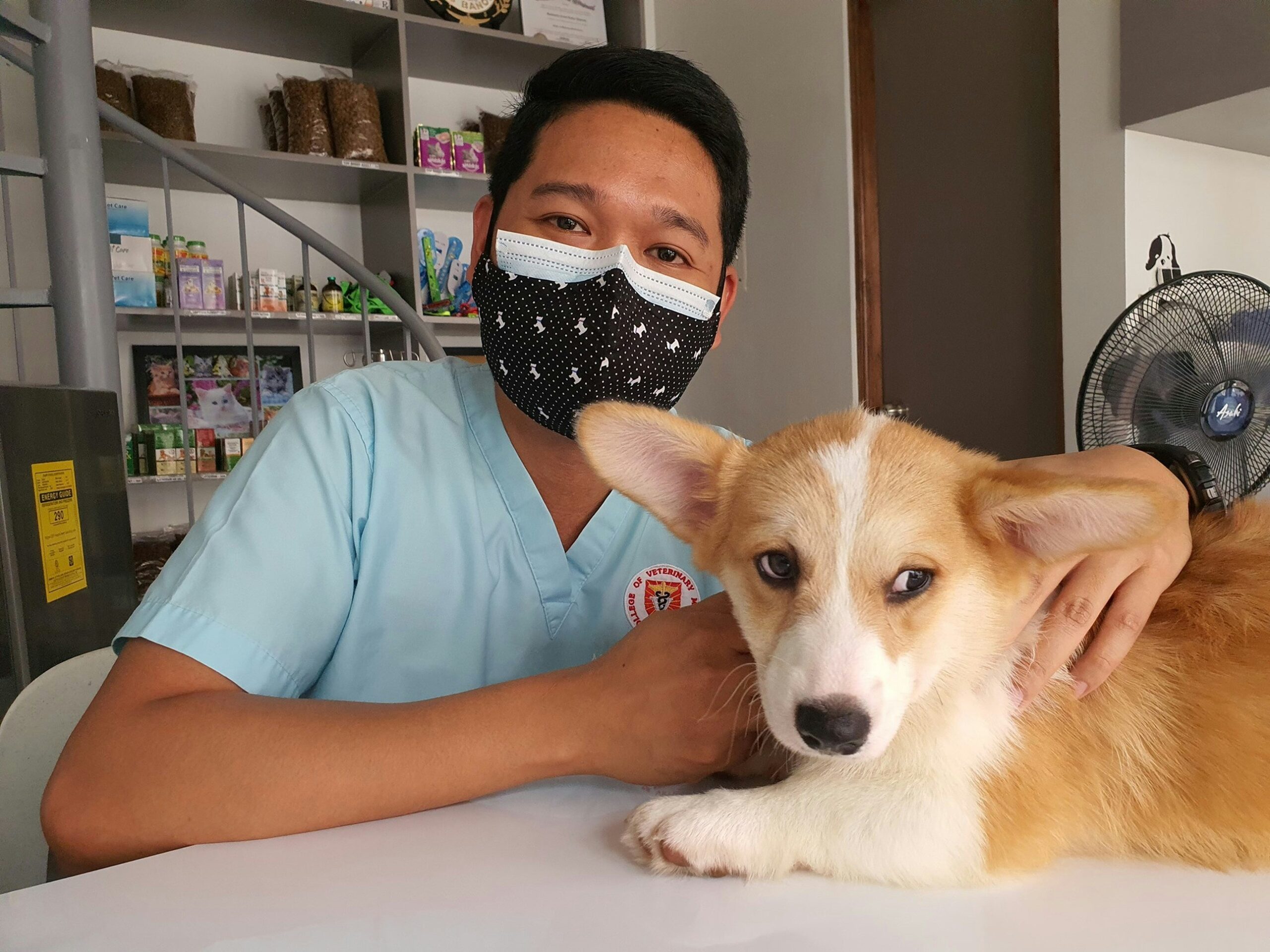PetVet, VetCor & Blue River: Are Mid-Market Buyers Paying Higher Multiples in 2025?
Selling a veterinary practice today isn’t as straightforward as it was just a few years ago. For many owners reviewing offers, the PetVet purchase price in 2025 isn’t about a lump sum. It’s the deal structure, the post-sale expectations, and who you’re selling to.
Also, more clinic owners are entering the market than ever, creating buyer optionality and compressing multiples for some while increasing bidding wars for others. PetVet, VetCor, and Blue River are assessing post-sale alignment, operational risk, and future scalability.
This blog explains how buyers are structuring offers today, what to review before signing anything, and how to position your clinic so you’re not leaving six figures on the table due to avoidable deal terms.
PetVet Purchase Price 2025: What Veterinary Owners Should Expect
You won’t see a public formula for how PetVet prices its veterinary clinic acquisitions in 2025, but behind every signed deal is a clear pattern. And for owners considering a sale, recognizing that pattern early can make a real difference in outcome.
The PetVet purchase price 2025 is hovering in a competitive mid-market zone: 7.5x to 9.5x EBITDA for multi-doctor general practices in high-demand geographies. For standout practices, those with over $2M in EBITDA and strong management systems, the offers can creep into 10x+ territory, especially if real estate is part of the conversation.
But here’s what many sellers miss: valuation isn’t just about top-line revenue or EBITDA size. It’s about risk reduction. PetVet pays more when they see sustainability, scalability, and less reliance on the current owner.
If the lead DVM is also the sole producer and the linchpin of daily operations, the deal often shifts. What looked like an 8.5x multiple quickly becomes 7.0x after adjustments.
Buyers are also looking at:
- Staffing capacity: Is there room to add another DVM without overhauling the space?
- Operational efficiency: Are doctor hours normalized? Are SOPs in place?
- Client retention: Do wellness plans play a role in revenue stability?
- Service diversity: Is your clinic dependent on routine care alone, or is there high-margin work (surgery, diagnostics, dental) built in?
What gives PetVet an edge and makes it competitive despite offering slightly lower upfront multiples than large consolidators is its structural flexibility.
In 2025, sales outcomes aren’t defined by one headline number. They’re shaped by the clinic’s story: its team, its systems, and how easily it can operate without its founder in the chair. Owners who understand how PetVet sees value, and prep accordingly, will find more leverage than they realize.
Inside the VetCor Sale Process: Lessons for Sellers
Selling to a buyer like VetCor today means understanding the fine print behind what seems like a straightforward offer. The VetCor sale process may look clean on the surface, but the structure, diligence, and employment expectations behind the scenes can catch unprepared clinic owners off guard.
How the VetCore Sale Process Unfolds
Most VetCor deals follow a 3-4 month path:
- Week 1-4: Introduction, NDA, financial review, initial conversations
- Week 5-6: On-site visit, cultural assessment, initial offer
- Week 7-12: Deep diligence, legal, LOI finalization
- Week 13-16: Closing and onboarding
The process is fast, which means you need to be ready from day one. VetCor’s team will check your financials, normalize the EBITDA, benchmark staff wages, and ask for a 2-3 year employment runway from the owner.
What They Look for and Push Back On
VetCor is known for its disciplined financial review. EBITDA adjustments are rarely generous. If your books are padded with personal expenses or inflated add-backs, expect pushback.
Common negotiation hurdles:
- Owner working 40+ clinical hours weekly? They’ll normalize your role and reduce the value accordingly.
- Associate DVM turnover? Expect questions about staff retention and replacement plans.
- Aging equipment? You may be asked to upgrade or see the offer discounted.
Where VetCor Differs
VetCor tends to offer higher cash at close compared to buyers like PetVet. But that comes with less structural creativity. Earnouts are small and conservative (10-15%). Equity is rarely included unless you’re selling multiple locations. Sellers looking for flexible roles or long-term upside might find PetVet more accommodating.
| Bottom Line: Have a third-party EBITDA analysis ready and address any owner-dependency issues before talks begin. VetCor moves fast for clinics with clean books and a transition plan. |
Blue River PetCare Valuation: Why Multiples Are Increasing
Multiples are increasing across the mid-market veterinary M&A space but it’s the Blue River PetCare valuation approach that’s raising eyebrows. For the right kind of practice, they’re now paying in the 8.5x to 11x EBITDA range, rivaling even the top-tier corporate vet practice buyers.
What Blue River Looks For
Blue River isn’t chasing just any general practice. Their focus is narrow, disciplined, and built around scale potential.
Key practice features they favor:
- $1.5M+ EBITDA with clean financials
- Multi-DVM staff (3+ doctors with retention)
- Metro/Suburban footprint with affluent demographics
- Operational scalability with clear SOPs, EMR use, and strong support staff
- Limited owner dependency, where they prefer the owner to play a reduced role post-sale
The Multiples
| Clinic Profile | Typical Multiple |
|---|---|
| 2-3 DVMs, $1.5M EBITDA, high retention, metro | 9.5x–10.5x |
| Single DVM, under $1M EBITDA, rural area | 7x–8x |
| Multi-location, >$2M EBITDA, strong margin | 10.5x–11x |
Notably, Blue River doesn’t just offer high multiples; they structure simple, clean deals with 80-90% cash at close. That predictability is appealing for owners seeking to fully step away without chasing upside in stock or earnouts.
Why Mid-Market Buyers Like PetVet Are Paying Higher Multiples
Mid-market buyers like PetVet are approaching the deal process with something to prove. Backed by private equity funds under pressure to deploy capital, they’re paying more aggressively, especially for well-run general practices with 2-4 DVMs and clear growth potential.
That’s why, when reviewing the PetVet purchase price to large corporate offers, owners often find themselves looking at 8.5x-10x EBITDA, while bigger names stall closer to 7x-8x.
What’s Driving Higher Mid-Market Offers?
- Capital Pressure from PE Funds: PE sponsors backing groups like PetVet are in early-stage investment cycles (years 1-3). They need to build scale fast, even if it means stretching on valuation.
- Focused Deal Volume: Mid-market buyers target fewer deals, so each acquisition counts more. That allows for stronger bids on clinics that match their platform criteria.
- Seller Experience: Owners working with brokers or consultants create competitive bidding. PetVet often steps up to secure a deal fast and avoid drawn-out negotiations.
Deal Multiples: Mid-Market vs. Big Corporate
| Buyer | Avg Multiple (EBITDA) | Deal Traits |
|---|---|---|
| PetVet | 8.5x – 10.5x | Flexible roles, equity options, fast close |
| NVA / Mars / VCA | 6.5x – 8.5x | Conservative, rigid post-sale roles, longer diligence |
| VetCor | 12x – 13x | Cash-heavy, detailed normalization, lower flexibility |
How EBITDA Adjustments Increase Veterinary Practice Valuations
For any clinic owner gearing up for a vet practice sale, your reported EBITDA isn’t the number buyers will use. Veterinary practice valuations in 2025 are increasingly shaped by how buyers adjust EBITDA, and those adjustments can swing offers by hundreds of thousands of dollars.
Buyers like PetVet, VetCor, and Blue River each apply different philosophies when it comes to “normalizing” earnings. Some are more flexible than others, but all will take a hard look at your books and apply their own math.
What Gets Adjusted And Why It’s Important
Buyers don’t just accept your EBITDA at face value. They’ll review line items, owner involvement, compensation, and operational risk. Their goal: determine true, repeatable earnings that the clinic can produce post-sale, without you at the helm.
Common Add-Backs (Boost EBITDA):
- Owner’s excess salary above market
- Personal expenses run through the business (cars, insurance, travel)
- Non-recurring legal or marketing costs
- One-time equipment upgrades
- Family member “payroll” with no operational role
Common Reductions (Lower EBITDA):
- Overproduction by owner (>40 hrs/week)
- Underpaid staff wages (adjusted to market)
- Relief vets paid off-books or not under contract
- Temporary revenue spikes (e.g., pandemic surge)
Impact of EBITDA Adjustments
| Buyer | Reported EBITDA | Adjusted EBITDA | Valuation (8.5x) |
|---|---|---|---|
| PetVet | $500,000 | $605,000 | $5.14M |
| VetCor | $500,000 | $520,000 | $4.42M |
| Blue River | $500,000 | $565,000 | $4.80M |
Cash at Close vs. Earnouts: Deal Structures in 2025 Veterinary Sales
Most practice owners fixate on the multiple. But what really matters in 2025 is what gets wired to your account and when. Two identical offers can have very different outcomes depending on how they’re structured. And that’s where cash at close vs. earnouts come in.
What’s Changing in Today’s Deals
Buyers aren’t just offering a lump sum anymore. Especially in the mid-market, they’re spreading out payments to manage risk and to incentivize you to stick around.
Here’s how it’s playing out:
- PetVet often structures deals with 70-80% paid upfront, and the rest tied to performance over 1-2 years.
- VetCor leans toward 85-90% at closing, keeping earnouts modest and tied to predictable metrics.
- Blue River keeps things clean, so most deals close with 80–90% upfront, no strings, especially if the clinic is stable.
What Does That Mean for You?
If you’re under 50, planning to stay a few more years, and confident in the clinic’s future numbers, a larger earnout may give you a bigger total payday. But if you’re close to retirement or stepping away after the deal, cash-heavy deals offer certainty and far less stress.
Quick Deal Comparison:
| Buyer | Cash at Close | Earnout | Notes |
|---|---|---|---|
| PetVet | 70-80% | 20-30% | Earnout tied to growth, staffing |
| VetCor | 85-90% | 10-15% | Short-term, conservative metrics |
| Blue River | 80-90% | Low | Often skipped if the clinic is turnkey |
Equity Rollovers: Should You Take Stock in PetVet or VetCor?
When you’re selling your clinic, you’ll hear terms like “second bite of the apple” thrown around a lot, especially from mid-market buyers like PetVet and VetCor. What they’re really talking about is an equity rollover where part of your sale price is converted into ownership in the buyer’s larger platform.
This isn’t a bad thing. But it’s also not guaranteed upside.
How Equity Rollovers Work
Instead of taking 100% of your sale in cash, you roll a portion, say 15–25%, into shares of the buyer’s company. If that company grows and is sold again (usually in 3–5 years), your equity may be worth double or more. But if things stall, you’ve just locked away a chunk of your payday in an illiquid investment.
PetVet vs. VetCor
| Buyer | Is Rollover Common? | Typical % Rollover | Past Return Examples | Notes |
|---|---|---|---|---|
| PetVet | Yes, especially for multi-location sellers | 10-25% | 2.5x – 3.5x reported | Geared toward younger sellers or growth-minded exits |
| VetCor | Less common | 5-15% | 1.8x – 2.5x typical | Reserved for larger deals or platform plays |
PetVet is more likely to pitch equity as part of your deal. If you’re staying 2-3 years, playing an active role, and open to strategic growth, it may be a smart move. VetCor, on the other hand, leans toward simpler, cash-heavy offers and rarely includes rollover unless you’re bringing serious size.
Regional Hotspots: Where Veterinary Practice Valuations Are Surging
Location influences veterinary practice valuation, but this year, the gap between top-tier regions and the rest has never been wider. For owners thinking of selling, where your clinic is located can add (or subtract) 1x-2x on your EBITDA multiple, sometimes more.
Why Geography Is Driving Bigger Multiples
Buyers are chasing growth. And they’re putting premiums on clinics in areas where:
- DVM supply is tight
- Demand for care is growing
- Income levels support higher service utilization
- Recruiting and retention are easier
In these markets, mid-market buyers are bidding aggressively to secure anchor clinics before competitors move in.
Valuation Hotspots: 2025 Multiples by Region
| Region | Typical Multiple | Notes |
|---|---|---|
| California (Bay Area, San Diego) | 9.5x – 11x | High-income zip codes + major DVM shortages |
| Texas (Austin, Dallas suburbs) | 9x – 10.5x | Explosive pet population + corporate expansion |
| Florida (Orlando, South FL) | 9x – 10x | High pet ownership rates, aging population |
| Northeast (Boston, NJ suburbs) | 8.5x – 10x | Dense markets with strong cashflow clinics |
| Colorado Front Range | 8.5x – 9.5x | Strong demand, limited clinic supply |
What Buyers Are Looking for in These Areas
- Scalability: Room to add another DVM or expand hours
- Stability: Low staff turnover and consistent client growth
- Owner Flexibility: Willingness to stay short-term or reduce clinical load
- Real Estate Certainty: Lease or purchase terms that won’t scare off investors
Urban vs. Suburban vs. Rural
| Location Type | Avg Multiple (2025) | Buyer Sentiment |
|---|---|---|
| Urban Core | 9x – 11x | High demand, competitive bids |
| Suburban Growth | 8.5x – 10x | Most desirable, room to scale |
| Rural | 6.5x – 8.0x | Lower unless practice has strong EBITDA |
How to Position Your Practice for a Higher PetVet Purchase Price
Most clinic owners think growth means more revenue. But what PetVet is really paying for in 2025 is stability, scalability, and reduced risk. If you want a premium offer, the story has to go beyond the top line.
The PetVet purchase price 2025 is climbing for the right kind of practice, and that’s often defined by what buyers see when they pull back the curtain.
What PetVet Wants to See: PetVet is putting a premium on clinics that look strong with or without the owner. The goal is to be predictable.
Core areas that influence valuation:
- EBITDA Margins above 15%. Efficient operations signal long-term viability.
- DVM retention over 2 years. Lower turnover = lower replacement cost = higher multiple.
- Owner working <30 clinical hours/week. Less dependency = less risk for the buyer.
- Systems already in place. SOPs, financial clean-up,and wellness plan usage all add weight.
| Metric | Target to Hit Premium Multiple |
|---|---|
| Revenue per DVM | $900K+ |
| Active client base | 2,500+ clients with >70% retention |
| EBITDA margin | 15-20%+ |
| New clients/month | 50-100 (organic, not promo-driven) |
| Payroll cost % of revenue | 35-40% |
How to Prepare (12-18 Months Out)
- Normalize your role: Shift procedures to associates. Step out of the clinical spotlight.
- Audit your expenses: Remove personal or inconsistent items from P&L early.
- Build a bench: Hire and retain at least one full-time associate well in advance.
- Document systems: SOPs, EMR workflows, and handoffs reduce vet practice transition concerns.
- Negotiate lease terms: Buyers love long-term stability or clean ROFRs.
| Bottom Line: PetVet is looking for something durable. The cleaner and more transferable your business is, the more they’ll pay. Simplify your role, and document what you already do well. That alone can add $500K+ to your sale price. |
Common Mistakes That Lower Blue River PetCare Valuations
For sellers considering Blue River in 2025, the numbers look promising but only if the clinic clears a few key hurdles. Their diligence process is sharp, and minor issues can quickly shave $500K or more off your valuation.
| Blue River’s Filters Are Strict. Blue River focuses on clinics that are operationally stable and clinically scalable. They don’t want a fixer-upper. They want a business that runs clean, even if the owner steps out. |
Common Seller Mistakes:
- Over-relying on one DVM. If the owner is the primary producer, the risk profile spikes and so does the discount
- Messy or overinflated EBITDA. Personal expenses disguised as business costs get stripped out fast
- No succession or staffing plan. If there’s no clear bench of associate doctors, buyers assume long-term instability
- Financials with “gray areas.” Non-categorized expenses, commingled funds, or outdated records slow diligence
Example Scenario:
| Scenario | Stated EBITDA | Adjusted EBITDA | Final Multiple | Estimated Deal Value |
|---|---|---|---|---|
| Solo owner, inflated add-backs | $400K | $320K | 5.8x | $1.86M |
| Two-DVM team, clean financials | $400K | $390K | 9x | $3.51M |
What Blue River Values Instead
- Associate stability: at least one full-time DVM, low turnover
- Well-documented systems: EMRs, SOPs, HR policies
- Revenue diversity: diagnostics, wellness, surgery = higher confidence
- Clean lease or ROFR: they don’t like messy real estate terms
Exit Options Beyond PetVet, VetCor, and Blue River
PetVet, VetCor, and Blue River aren’t the only names in the room, even if they’re the ones showing up in your inbox. This year, more practice owners are looking at exit paths that offer a bit more breathing room, or more control over what happens after they sell.
The good news is that you’ve got choices. But not all are created equal.
- Local DVM Buyers: Usually, solo vets looking to own. They don’t pay the highest multiple, but if keeping things personal matters, this route keeps your clinic independent. Often slower to close and may need seller financing.
- Associate Buy-In / Phased Sale: You sell part now, more over time. Works best if your associate has long-term plans and you’re not in a rush. Payment is gradual, but so is the handoff.
- Minority Equity Partners: Sell 30-49%, retain control. Good option if you want to stay involved but take some cash off the table. Used more in growing multi-location groups.
- Specialty or Regional Buyers: If you offer ER, ortho, or have high-margin services, there are niche buyers that may offer strong pricing and often above what general consolidators will pay.
Quick Snapshot
| Option | Speed | Typical Multiple | Who it Suits |
|---|---|---|---|
| Local DVM Buyer | Moderate | 4.5x – 6.5x | Owners prioritizing legacy |
| Associate Buy-In | Slow | 5x – 6x (implied) | Flexible timelines, trust in the team |
| Minority Sale | Fast | Based on the structure | Owners who want capital, not exit |
| Niche Buyers | Fast | 9x – 12x if a fit | ER, specialty, multi-site clinics |
Conclusion
This market moves fast, but the best outcomes still come from good preparation. Every buyer, from PetVet to Blue River, has their own playbook. But what they all reward is a business that’s stable, documented, and not dependent on one person to keep it afloat.
Whether you’re looking at PetVet, VetCor, or Blue River, understanding how multiples are built, what buyers prioritize, and where your leverage lies can mean a difference of millions.
Know your EBITDA, clean up your books, and have a plan for what happens after you leave. Do that, and you’ll not only attract stronger offers, but you’ll also have real options on how you walk away.
FAQs
1. What’s the typical PetVet purchase price today?
For strong general practices, PetVet is coming in around 8-9.5x EBITDA. They’re aggressive when the clinic has multiple DVMs, stable staffing, and room to grow. Practices heavily tied to a single owner usually land lower.
2. Should I take equity in PetVet or VetCor when selling?
Equity rollovers work well for sellers who plan to stay involved for 2-3 years and believe in the buyer’s long-term growth. PetVet offers equity more often than VetCor. If you prefer liquidity and a clean exit, a higher cash-at-close deal may be the better fit.
3. What hurts my Blue River PetCare valuation the most?
The biggest issues are overdependence on the owner, inconsistent financials, and lack of associate coverage. If you’re the main producer or your financials include personal spend, expect a lower adjusted EBITDA and possibly a reduced offer. Clean systems and a stable team can make a big difference.
4. How can I increase the sale price of my practice before listing?
Start by reducing your clinical hours, hiring at least one stable associate, and cleaning up your finances. Buyers will pay more for a business that operates without the owner in the center. Strong EBITDA margins, wellness plans, and clear documentation all contribute to higher valuations.
5. What kind of deal terms are standard these days?
Most offers include 75-90% cash at close, with the rest in earnout or optional equity. The split depends on how involved you plan to be after closing. Shorter transitions usually come with higher upfront payouts.

Melani Seymour, co-founder of Transitions Elite, helps veterinary practice owners take action now to maximize value and secure their future.
With over 15 years of experience guiding thousands of owners, she knows exactly what it takes to achieve the best outcome.
Ready to see what your practice is worth?











